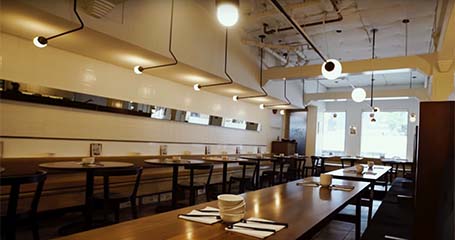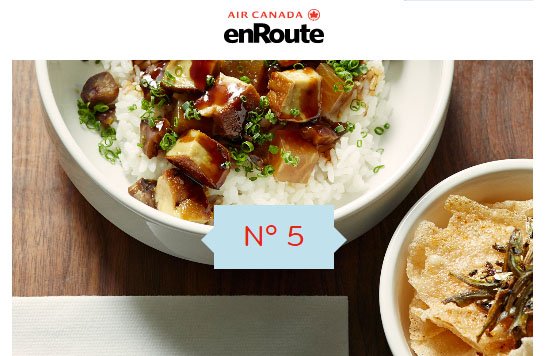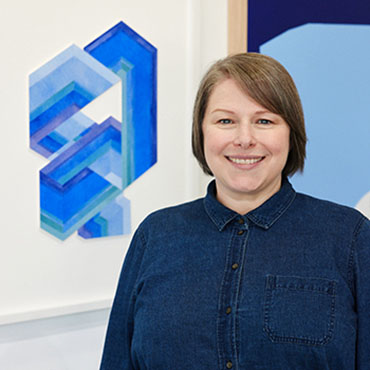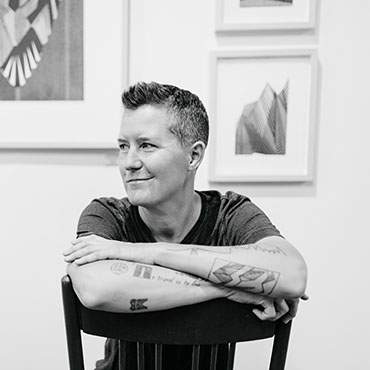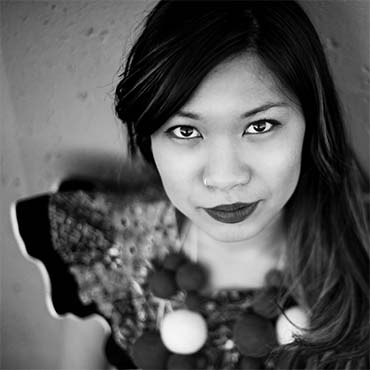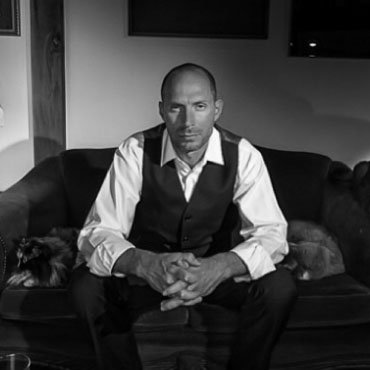
east / west / eat / drink
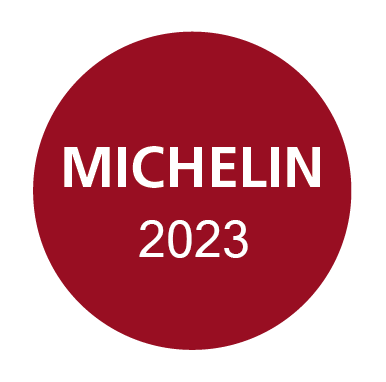
Who We Are
Located in historic Gastown, we are a Vancouver restaurant paying homage to the unique cultures that make up the tapestry of this great city. Seamlessly using Asian and Pacific Northwest ingredients with current techniques. Michelin 2022 and 2023 recommended and enRoute top 10 for best new restaurant in Canada in 2013, we continue to strive for excellence in everything we do.
Reflecting our namesake, we combine multiple cultures and cuisines to create a whole new language in dining. Our goal is for you to leave PiDGiN having an experience unlike anywhere else in the world.
At PiDGiN, we see no need for distinctions between casual and fine dining.
A restaurant can be both beautiful and comfortable; cuisine can be at once delicate and approachable. As dining perspectives have changed, so too has the line between east and west. Our experiences travelling and working in various continents is reflected in our food, bar, and even on our walls.
/menu
Common cuts rendered sublime. Deceptively simple staples skewed and polished with Asian elegance. Large format family-style ssäm with the attention to detail and flavour usually reserved for highly composed dishes. These are the cornerstones of PiDGiN's food: rarely predictable but never overwrought and fussy, always thoughtful, cared for, and prepared with the utmost integrity.
/bar
Our bar pays its respects to classic cocktails with fresh interpretations that make good use of our region’s fine local bounty. By the glass and bottle is a tight wine and sake list, bolstered by a well-curated reserve list for those seeking something truly special. Perhaps most exciting is the harmony between kitchen and bar, a collaboration that ensures equal attention to detail and creativity with the ladies and gentlemen behind the wood and stoves.
/design
Craig Stanghetta of Ste. Marie based Pidgin’s design around the food and approach of PiDGiN. Much like the namesake, the design borrows liberally from different schools of thought. Curated ephemera, inverted subway tile and contemporary lighting stand against clean Japanese joinery, simple panel moulding and an intentionally sparse and functional layout. The mandate was to be disparate and somehow achieve balance--much like each dish that leaves the kitchen.
Menus
tasting menu / spring 2024 - suggested pairings
tartelette
smoked steelhead trout roe, bottarga, cauliflower puree & wasabi florets
pairing -bella, king family vineyard, blanc de blancs, naramata, bc ’22
chu-toro
sanshozuke marinaded tuna belly, aosa rice cracker
pairing - sychromesh, gibson-block 3, riesling, okanagan falls bc '22'
beet salad
grapes, bleu d’auvergne, walnuts, cress, fermented plum vinaigrette
pairing - les chemins de l'arkose, corent rose, cotes d'auvergne, fr ' 22'
veal sweetbreads and prawns
sauteed artichokes, fennel fronds, cardamom, confit fennel velouté
pairing - domaine de la combe, réserve personnelle, muscadet sèvre et maine '19 loire fr
sake kasu sablefish
lotus root, turnip, rapini, somen, dashi cream sauce
pairing - mitobe / yamagata masamune, dewa-san-san, usunigori junmai yamagata jp
saddle of fraser valley lamb
herb crusted braised neck, anchovy mashed potato, pickled bok choy, brussels sprouts, parsnip chips, hacho miso lamb jus
*subsitute for 4oz a5 wagyu - 70 / person
pairing - echo bay, synoptic, cabernet franc/merlot/cab sav+, '20, okanagan falls bc
tapioca pudding
matcha, coconut, longan
pairing - pina colada milk punch
98 / person
75 / wine / sake pairing
designed to be shared between a minimum of 2 people
tartelette
grated truffle, cauliflower puree & wasabi florets
pairing -bella, king family vineyard, blanc de blancs, naramata, bc ’22
kohlrabi
sanshozuke marinaded kohlrabi, aosa rice cracker
pairing - yoshida, gassan izumo, junmai ginjo, shimane, jp
beet salad
grapes, bleu d’auvergne, walnuts, cress, fermented plum vinaigrette
pairing - domaine rolet, étoile, chardonnay, arbois, jura, fr ’20
artichokes and mushrooms
sauteed artichokes and shitakes, cardamom, confit fennel velouté
pairing - les chemins de l’arkose, corent rosé, côtes d’auvergne, fr '22
atsuage tofu
somen noodles, veg. dashi cream, turnip, rapini, lotus root
pairing - mitobe / yamagata masamune, dewa-san-san, usunigori junmai yamagata jp
fermented cabbage
compressed apple, shimeji mushrooms, almond & miso glaze
pairing - echo bay, synoptic, cabernet franc/merlot/cab sav+, '20, okanagan falls bc
tapioca pudding
matcha, coconut, longan
pairing - chateau d’armajan des ormes, sauternes, fr, ‘16
89 / person
75 / wine / sake pairing
designed to be shared between a minimum of 2 people
beautiful bites / best enjoyed with great company
SNACKS / AMUSE
daily pickles 5
our rotation of pickles / banchan
beef tendon chicharron 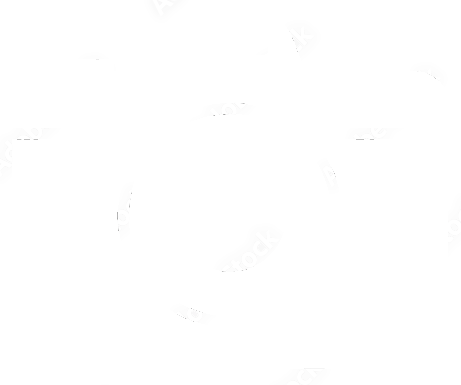 6
6
gochugaru citrus spice
MEDIUM
chicken wings  17
17
gochujung sauce, tosazu pickle daikon
*stuffed fermented cabbage  20
20
compressed mutsu apple, enoki mushrooms, miso glaze, almonds
*agedashi tofu  16
16
fermented chili ponzu, gochugaru citrus spice
beet salad 19
grapes, bleu d’auvergne, walnuts, cress, fermented plum vinaigrette
LARGER
korean rice cake  24
24
omnivore, vegetarian or *vegan, gochujung bolognese, spiced hazelnut
pork belly rice bowl  27
27
asian pear kimchi, bamboo, quail egg
foie gras rice bowl  37
37
chestnuts, daikon, unagi glaze
sablefish 42
sake kasu marinade, lotus root, turnip, rapini, somen, dashi cream sauce
game hen roulade 36
shimeji duxelle, fuji apple, celeriac puree, saffron potato, sake & chicken jus
a5 wagyu 4oz 100
fresh wasabi
SWEET
szechuan pepper beignet  10
10
sugar dusting, salted caramel and miso sauce
tapioca pudding 10
matcha, coconut, longan
best way to start and end
PIDGIN CREATIONS
ronin 17
shochu, midori, cucumber cordial, lime, egg white
old quarter 17
5yr rum, lime, shiso, sparkling
smoke and spice 18
blanco tequila, mezcal, averna, gochujung syrup, lime
wasabi makhana 18
wasabi vodka, chartreuse, lotus seed orgeat, lime
malt fuji 18
nikka days, calvados, apple honey cordial, mt fuji bitters
foie gras manhattan 17
foie gras infused bourbon, umeshu, sauternes, bitters
50/50 17
kimoto tengumai sake, roku gin, shiso oil drop
mitsurin 16
oaked shochu, noilly prat amber, oloroso sherry, campari
CLEAR ICE
kodama cube 1
use kodama clear ice for your cocktail
a sip for every bite
301 20
choshu shuzo / tenbi, tenbi, saito no shizuku, tokubetsu junmai yamaguchi jp
kokuryu, cloudy dragon, gohyaku mangoku, junmai gingo, nama, genshu fukui jp
terada honke, daigo no shizuku, yukigesho / miyamanishiki chiba jp
201 16
yoshida / gassan, izumo, gohyaku mangoku 'junmai ginjo shimane jp
sawada / hakuro, senbon-nishiki / hattan-nishiki usunigori junmai aichi jp
miyoshino / hanatomoe, mizumoto x mizumoto, gin-no-sato futushu, nama nara jp
101 13
heiwa shuzo / kid, yamadanishiki 'junmai daiginjo wakayama jp
granville island sake, fraser valley, nigori junmai nama vancouver bc
hata, daijiro, ginfubuki, junmai, nama, genshu, yamahai, shiga jp
elegant 16
choshu shuzo / tenbi, tenbi, saito no shizuku 'tokubetsu junmai yamaguchi jp
yoshida / gassan, izumo, gohyaku mangoku 'junmai ginjo shimane jp
heiwa shuzo / kid, yamadanishiki 'junmai daiginjo wakayama jp
nigori 16
kokuryu, cloudy dragon, gohyaku mangoku, junmai gingo, nama, genshu fukui jp
sawada / hakuro, senbon-nishiki / hattan-nishiki usunigori junmai aichi jp
granville island sake, fraser valley, nigori junmai nama vancouver bc
funky 16
terada honke, daigo no shizuku, yukigesho / miyamanishiki chiba jp
miyoshino / hanatomoe, mizumoto x mizumoto, gin-no-sato muroka, genshu, nama nara jp
hata, daijiro, ginfubuki 'junmai, nama, genshu, yamahai, shiga jp
ELEGANT
heiwa shuzo / kid, yamadanishiki 11 / 82
junmai daiginjo, wakayama jp
yoshida / gassan, gohyaku mangoku 14 / 103
izumo, junmai ginjo, shimane jp
choshu shuzo / tenbi, saito no shizuku 15 / 112
tenbi, tokubetsu junmai, yamaguchi jp
DRY
yoshi no gawa, gohyaku mangoku 8 / 59
brewmaster, honjozo, niigata jp
NIGORI
granville island sake, fraser valley 9 / 68
nigori junmai nama, vancouver bc
sawada / hakuro, senbon-nishiki / hattan-nishiki 14 / 106
usunigori junmai, aichi jp
kokuryu, gohyaku mangoku 19 / 147
cloudy dragon, junmai gingo, nama, genshu, fukui jp
FUNKY
hata, ginfubuki 15 / 115
daijiro, junmai, nama, genshu, yamahai, shiga jp
miyoshino / hanatomoe, gin-no-sato 14 / 105
mizumoto x mizumoto, muroka, genshu, nama, nara jp
terada honke, yukigesho / miyamanishiki 18 / 136
daigo no shizuku, chiba jp
UMESHU
yamaguchi, 13 / 99
tomari, shochu umeshu, fukuoka jp
SPARKLING
heiwa shuzo / kid, yamadanishiki 63
sparkling, junmai daiginjo, wakayama jp
dassai, yamadanishiki 80
sparkling, junmai daiginjo, yamaguchi jp
ELEGANT
heiwa shuzo / kid, yamadanishiki 82
junmai daiginjo, wakayama jp
yoshida / gassan, gohyaku mangoku 103
izumo, junmai ginjo, shimane jp
fukucho, hattanso 125
junmai daiginjo, akitsu jp
toshimori, omachi 147
akaiwa, junmai daiginjo, okayama jp
choshu shuzo / tenbi, saito no shizuku 112
tenbi, tokubetsu junmai, yamaguchi jp
sharaku, yamadanishiki 263
shizukodori, junmai daiginjo, fukushima jp
DRY
yoshi no gawa, gohyaku mangoku 59
brewmaster, honjozo, niigata jp
kamikawa taisetsu, kitashizuku 127
junmai ginjo, tokebetsu, hokkaido jp
NIGORI
granville island sake, fraser valley 68
nigori junmai nama, vancouver bc
sawada / hakuro, senbon-nishiki / hattan-nishiki 106
usunigori junmai, aichi jp
kokuryu, gohyaku mangoku 147
cloudy dragon, junmai gingo, nama, genshu, fukui jp
FUNKY
hata, ginfubuki 115
daijiro, junmai, nama, genshu, yamahai, shiga jp
miyoshino / hanatomoe, gin-no-sato 105
mizumoto x mizumoto, muroka, genshu, nama, nara jp
terada honke, yukigesho / miyamanishiki 136
daigo no shizuku, chiba jp
a sip for every bite
BUBBLES
bella, chardonnay 16 / 75
king vineyard, 22, naramata bench bc
ROSE / ORANGE
chemins de l'arkose, gamay d'auvergne 16 / 76
corent, 22, auvergne fr
kutatas, sauvignette 16
'22, salt spring island, bc (orange)
WHITE
domaine de la combe, muscadet sèvre et maine 15 / 70
réserve personnelle, '19 loire fr
chateau la canorgue, marsanne/roussane+ 15 / 70
'21 luberon, rhone valley fr - 16 / 75
domaine gerard duplessis, chardonnay 25 / 15
'19, chablis fr
RED
solvero, pinot noir 16 / 75
garnet valley vineyard, '20, summerland, bc
manoir de la tete rouge, cab franc 16 / 75
bagatelle, '20, 'saumur, fr
echo bay, cabernet franc/merlot/cab sav+ 19 / 91
synoptic, '20 okanagan falls bc
domaine santa duc, grenache+ 35 / 155
gigondas, 19, rhône valley fr
NON ALCOHOLIC
roatating 12
sparkling, white, red
bella, chardonnay 75
king vineyard, 22, naramata bench bc
lelarge pugeot, pinot meunier/pinot noir/chardonnay 375ml 77
tradition extra brut, 'nv, champagne fr
guy charlemagne, chardonnay 138
brut classic, nv, champagne, le mesnil-sur-oger fr
guillaume sergent, le chemin des chappes blanc de noir 1er cru 190
le chemin des chappes, 20, vallée de la marne fr
cazé-thibaut, pinot noir 255
jossias rose, 'nv, champagne, vallée de la marne
jean vesselle, pinot noir/chardonnay 271
grand cru brut prestige, '14 bouzy, champagne fr
roses de jeanne, pinot noir 299
vv/r20, '20 côte des bar, champagne fr
chemins de l'arkose, gamay d'auvergne 78
corent, 22, auvergne fr
viñátigo, gual 123
ancestral elaborations, '20, tenerife es
paras balta, xarel-lo 135
amphora brisat, '19 penedès sp
moulin de gassac, sauvignon blanc+ 70
eraus, 21, languedoc fr
suertes del marqués, listan blanco 79
trenzado, '20, tenerife es
1006, chenin blanc 80
azur, 21`, loire fr
french door, chardonnay 90
'21, oliver bc
francis blanchet, sauvignon blanc 97
les debuts, '20 pouilly-fumé fr
domaine rolet, chardonnay 105
etolie, '20, arbois, jura, fr
envinate, listan blanco 112
palo blanco, '20 tenerife es
montenidoli, vernaccia di san gimignano 114
fiore, '20 tuscany it
domaine gerard duplessis, chardonnay 115
'19 chablis fr
i vigneri salvo foti, carricante 124
vigna di milo, '19, sicily it
domaine dupré-goujon, chardonnay 125
le clos des muriers beaujolais village, 21, beaujolais fr
malat, riesling 128
steinbühel 1ötw, '19 kremstal, austria at
les parcellaires de saulx, chardonnay 295
les poruzots, '17, meursault, burgundy fr
moulin de gassac, cab sauv / syrah 70
albaran, '22, herault, fr
francois villard, syrah 75
l'appel des sereines, 20, rhône valley fr
solvero, pinot noir 75
garnet valley vineyard, '20, summerland, bc
echo bay, cabernet franc/merlot/cab sav+ 91
synoptic, '20 okanagan falls bc
claus preisinger, blaufränkisch 103
kalkstein, 21, burgenland at
cyril gouy, cabernet sauvignon/merlot 119
charme des confidences, '18 saint-émilion fr
gerard raphet, pinot noir 120
bourgogne rouge, 20, burgundy fr
wasenhaus, pinot noir 121
spätburgunder, '20, baden de
la ca'növa, nebbiolo 147
19, montestefano, barbaresco it
domaine marcel deiss, pinot noir 150
burlenberg, '15 alsace fr
domaine santa duc, grenache+ 155
gigondas, 19, rhône valley fr
lópez de heredia, tempranillo/garnacha+ 162
viña tondonia reserva, 11, rioja es
jean-luc colombo, syrah 162
la louvée, '17 cornas fr
domaine faiveley, pinot noir 165
clos des myglands, 19, mercurey, burgundy fr
terrasole, sangiovese 205
brunello di montalcino, 17, tuscany it
elio sandri, nebbiolo 267
barolo perno riserva, '16 piedmont it
château margaux, cabernet sauvignon/merlot/petit verdot 288
'15, bordeaux fr
domaine michel mallard 325
aloxe-corton 1er cru, 14, burgundy fr
cheers
BEER
container, pilsner 9.5
bc/473ml
moon underwater, hefeweizen 9.5
bc/473ml
superflux, wonderlove ipa 9.5
bc/473ml
brew hall, yuzu wheat ale 9.5
bc/473ml
'getaway cider', dry cider 7
bc/355ml
red racer, street legal pilsner 6
de-alcoholized 0.5% abv, bc/500
nonny, czech pilsner 9.5
sub 0.5% abv, bc/473
a good selection of unicorns
FLIGHT
japanese whisk(e)y flight 40
nikka "from the barrel"
nikka coffey grain
nikka coffey malt
whisk(e)y
mars iwai 9 / 14
suntory “toki” 11 / 18
nikka “from the barrel” 14
nirasaki blended 11
nikka miyagikyo single malt 15
nikka yoichi single malt 15
nikka “coffey grain” 15
nikka “coffey malt” 15
nikka "teketsuru" pure malt 15
suntory harmony 21
yamazakura 36
yoichi 10 40
mars "komagatake" 10 75
the hakushu 10 75
chichibu on the way 100
bottled 2015
chichibu ichiro’s malt 125
the floor malted
yamazaki 2017 limited edition 200
ssäm / for proper gluttony with friends
Currently we are doing full duck(s), with our made hoi sin glaze. Always served with a leafy green like red lettuce, shiso or sesame leaves, sauces, and a generous amount of panch'an (Korean side dishes) like house made napa kimchi, kkakdugi (daikon kimchi) and more.
Given the portion we suggest for groups of 4 or more, there's limited availability so order ahead especially on weekends.
$150 2 ducks / $80 for 1
zero proof tipples
sparkling
san pellegrino 10
sparkling water, 750ml
talinity kombucha 9
raspberry, sage
zero proof wine
edenvale, shiraz 12
nv, new south wales, au
zero proof cocktails
okinawa rail 12
lumette non alc gin, vibrante, lime, pineapple, simple, soda
sensible spritz 10
non alc campari, orange, ginger, soda
almost zero proof beer
red racer, street legal pilsner 6
de-alcoholized 0.5% abv, bc/500
nonny, czech pilsner 9.5
sub 0.5% abv, bc/473
Contact
Our Team
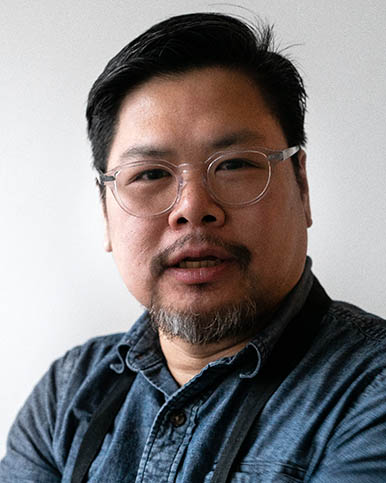
Wesley Young
Executive Chef
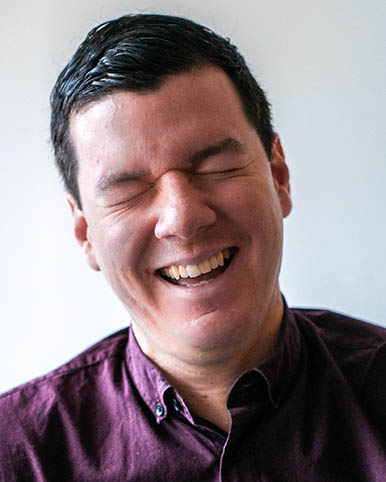
Jordan Pollard
Assistant GM
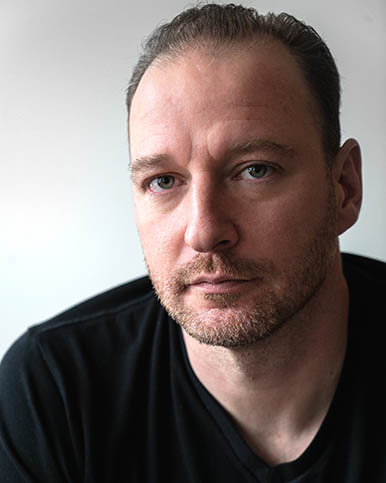
Brandon Grossutti
Owner / Operator
Gift Cards
We offer gift cards in any denomination at the restaurant or purchase one of the following options below through Paypal.
The gift card will be kept at the restaurant for the recipient to pick up unless other instructions are specified.
Historical Mural
1855-1955 #pidginmural
The Painting
The mural at 350 Carrall by Ilya Viryachev is meant to symbolize the history of Vancouver, concentrating primarily on its surroundings between 1855-1955. It is impossible to include every significant event over a century on one wall, so rather we aimed to represent various significant processes to reveal how Vancouver’s current model of tolerance and multiculturalism was forged through histories of violence, racism and inequality.
The piece starts pre-colonialism on the left of the mural. It depicts the lush green areas of Luck-Lucky, now ‘Gastown’, and references the Musqueam canoe portage route between Burrard Inlet and False Creek, as well as some traditional long houses. Moving right, the significance of the early forestry industry is expressed through the transition from dense trees to stumps.
Next we pay homage to what initially drove a great deal of settlement and the expansion of Vancouver, the Gold Rush in the interior of B.C and the completion of the Canadian Pacific Railway. The gold rush is represented by a pair of hands gold panning. It was this process that brought the first Chinese settlers to the area, initially from San Francisco in 1858 and then directly from China in 1860. The construction of the CPR greatly expanded these numbers, as an estimated 17,000 workers were brought across the Pacific from the Guangdong province of China. We have purposely placed a Chinese worker in the foreground while the stumps transform into politicians and Captains of Industry driving-in the Golden Spike in the back.
Next we have a tribute to Maple Tree Square and the role that alcohol and vice played in the development of Gastown. The tree transitions to a fire representing the great fire of 1886, where the city was destroyed just weeks after it was officially incorporated as ‘The City of Vancouver’. Next we have the 1907 Chinatown / Nihon Bachi (Japan District) riot, shown with an angry white mob attacking a storefront in Chinatown. There is reference to Wing Sang building, the oldest building still standing Chinatown, built by the influential Yip Sang in 1889.
We then fast forward to the depression where the rioters transition to a bread line and a despondent man is slumped over in the foreground. The background shows the confiscated fishing boats of Japanese-Canadian fisherman, which were taken during WWII when Japanese-Canadians were moved to internment camps in the interior. During the war Vancouver was one of the most productive ship building ports in North America, we symbolize with a large ship.
Throughout the piece, you see a train that starts at the golden spike and finishes near the end of the mural, this train represents the inter urban which used to bring passengers from all over the lower mainland to Hastings and Carrall, making this termination the centre of the city. In 1955 it was relocated from this spot and relocated to Granville Street, taking with it thousands of daily commuters and visitors and re-orientating the ‘centre’ of the city further west.
The last piece is a representation of a Musqueam woman symbolically tearing up the Indian Act in 1951. The reforms allowed the indigenous people of Canada to once again perform cultural practises such as the Potlatch, bring land claims to the government, and for women to vote in band council elections.
